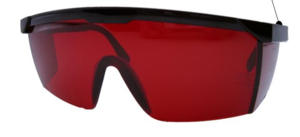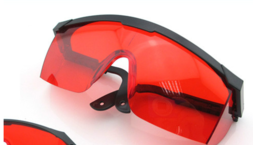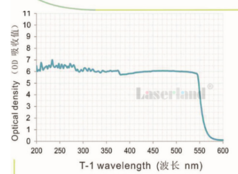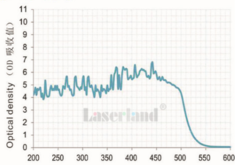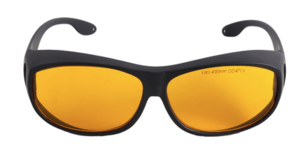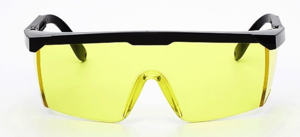Темный период
Темный период - это способ стабилизировать свой циркадный ритм при отсутствии длительных блоков сна и повысить качество SWS. Это также предотвращает возникновение определенных проблем со здоровьем. Для большинства графиков он должен начинаться за 1-3 часа (в большинстве случаев рекомендуется 2 часа) до ночного блока сна (близко к пику SWS) и продолжаться в течение примерно 8-12 часов после этого.
Обоснование
До появления электрического освещения в наше время у людей исторически был стабильный период времени в течение ночи, во время которого освещение было минимальным. Это сохраняло их циркадный ритм стабильным и синхронизированным с естественным циклом дня/ночи.
Современные люди часто используют электрическое освещение в ночное время. Это может быть проблемой, так как организм думает, что еще день, даже если уже полночь, и это одна из причин, по которой люди часто испытывают желание спать все позже и позже каждый день.[1] При монофазном режиме темный период для поддержания циркадного ритма стабильным может быть относительно коротким перед длительным сном.
Однако для полифазников, у которых может не быть таких длительных блоков сна ночью, это создает проблему. Поскольку искусственный свет присутствует круглосуточно, выработка мелатонина подавляется, а качество SWS находится под угрозой. Это вызывает дополнительные трудности при адаптации, а также вредно для здоровья, поскольку нарушение циркадного ритма связано с различными проблемами со здоровьем.[2] Чтобы избежать этого, полифазники (и монофазники в том числе) должны практиковать темный период, в течение которого синий, зеленый и белый (поскольку он содержит как синий, так и зеленый) свет не должны попадать в глаза.
Время
Оптимальное время темного периода зависит от графика. Для большинства расписаний он должен начинаться примерно за 1-3 часа (по умолчанию 2 часа) до "вечернего" блока сна (ядро для Everyman, первое ядро для Dual core, TC1, TC2 и вечернее ядро для Triphasic).
- Для E1 и Сиеста темный период должен начинаться перед ядром и заканчиваться сразу после пробуждения.
- Для E2, E3 (включая расширенный) и E4 он должен продолжаться до конца первого нэпа до тех пор, пока промежуток между ядром и нэпом составляет не более 5 часов.
- Для Сегментированного и Dual core темный период должен покрывать весь промежуток бодрствования между ядрами до тех пор, пока его длительность не превышает 12 часов.
Механизм
The intrinsically photosensitive retinal ganglion cells (ipRGCs) controls the secretion of melatonin by the pineal gland. Their sensitivity to light is independent from normal vision, which is mediated by cones and rods in the eyes. The ipRGCs have a peak sensitivity at 480 nm and drops off on both sides.[3] During the dark period it is preferable to avoid light altogether, as all light provides some melatonin suppression, but this is not reasonable for most people's lifestyles. Instead, is best to simply avoid as much bright light as possible, and limit light intake to only necessary yellow, orange and red light in order to limit melatonin suppression as much as possible.
Methods
Goggles
The most popular and versatile method for achieving a dark period is through the use of red-coloured laser goggles (colloquially known as "DP goggles" in the Discord community). There are several types of these available, and below is a comparison between their light-filtering lens tints:
Notes:
- The dark red goggles may be too dark and reduce vision, but this would be useful during daylight hours or in bright environments.
- The light red goggles let in substantially more red and green light than the orange one, but less yellow. The overall brightness appears to be slightly higher for the orange one, but the orange one allows for more colour perception. Based on the melanopic sensitivity function, both should provide similar levels of protection against melatonin suppression.
- There is a significant price difference between the first two and the third and the fourth one. However, the third and fourth ones have better quality (fewer rough edges on the plastic, more uniform transparency, and provide more options).
Red interior lighting
If you live in a space where you are in control of the lighting, it is possible to use either RGB or pure red LED lights during dark period to avoid the inconvenience and/or discomfort from wearing goggles. However, you must still be sure that you wear dark period glasses when looking at screens such as your electronic devices, and if you live in an area with bright lights outside your house, it is best to draw your blinds (blackout curtains ideally) in order to block any external light.
Computer screen colour filters
| Name | OS support | Automated? | Note |
|---|---|---|---|
| Redshift | Linux(X11) | Yes | configuration |
| F.lux | Windows | Yes | faq link |
| iOS&macOS native feature | iOS, macOS | No | tutorial |
For all of these software packages, you should change the colour temperature to the minimum possible (1000K for redshift, 1200K for f.lux).
For Linux on Wayland, please use the night light options offered by your desktop environment (KDE and GNOME offer this feature). Editing the colour temperature manually might be necessary to achieve the amount needed. Change colour temperature on GNOME
Note that, even with all the red colour filtered away, all screens, with the exception of OLED screens on some phones, will bleed backlight, which is white and can compromise your dark period. Depending on the quality and brightness setting of your screen, this may or may not be an issue.
Living with dark period
Using any of the above methods to achieve a dark period should limit the accuracy of your perception of non-red lights during your dark period. This may impair you ability to do certain tasks. However, there are some methods to mitigate this.
Monochromatic filters
Using red goggles or red filters can make it difficult to see certain colors on your screen. To solve this problem, you may wish to temporarily remove colors on your screen with a monochrome/greyscale filter. Here are some ways to do it:
On iOS and macOS, go to Accessibility > Display > Color Filters, turn on Color Filters and select “Greyscale”
On Android, open up Settings, then tap Digital Wellbeing & parental control, then choose Wind Down, you can set up a schedule for the evening, which will turn your screen greyscale for the scheduled time. Alternatively, go to Settings > Developer Options > Simulate colour space and choose Monochromacy. (For this, you need to have Developer Options enabled. link)
On GNOME, you can use the extension Desaturate All (remember to checkout to the feature branch) to turn your display monochrome with the click of a button. It is possible to use switch back and force between red-only and red-greyscale mode to make a rough estimate of the underlying colour (this also applies to other methods).
On Windows 10, you can use the key combination Ctrl + Windows + C to toggle a grayscale filter. This can be configured by finding Turn color filters on or off from the start menu.
Colour pickers
When there is a need to determine some colours with precision, it is best to use a colour picker program. These programs grabs a pixel from your screen and records the brightness value in each of the subpixels.
Prescription glasses
If you need prescription glasses for vision correction, you may wear both at the same time via any of the three methods listed below.
Wear them outside the goggles
Wearing your prescription glasses outside the goggles is the preferred option for the first and second goggle types on the table, as there is less light leakage.
Wear them inside the goggles
It may be possible to wear most styles of corrective lenses inside of dark period goggles, depending on the model of your goggles. The orange and yellow goggles as pictured in the above table can fit over many glasses models, but it may not be particularly comfortable, depending on the shape of the prescription frames.
Glue lenses onto the goggles
This might be the most comfortable option once completed. Detaching your prescription lenses from their frames and glue them to the top of your goggles. Hot glue will not melt either the lenses or the first two goggles (the others have not been confirmed).
Tips:
- Choose the glasses that match in curvature with your goggles, so it would be easier to attach.
- Seal the gap completely around to prevent moisture from getting in, as it will be extremely difficult to remove afterwards.
- Perform the operation in a dry and preferable cold environment to minimize the amount of moisture in the gap. Failure to do so can result in the goggles fogging up in cold environments.
Warnings:
- Might cause slight dizziness at first due to axial misalignment. Try holding your prescription lenses in front of and behind your dark period goggles while they're on your face to determine which feels better before gluing them.
- The glue will not be easy to remove once attempted.
Related advice
Fasting period
It is recommended that you maintain a fasting period that covers the entirety of your dark period, as food is also an important zeitgeber, or circadian cue. Intermittent fasting has been anecdotally suggested to work well with polyphasic sleep. It is preferable to eat during the day rather than at night. A breakfast helps set the circadian day start. Water may be consumed, but any xenobiotic consumables will disrupt your circadian rhythm.
Exercise
Intense exercise such as strenuous weight lifting and long-distance running should be avoided during dark period, as this might disrupt the circadian rhythm.[4] In addition, exercise may also disrupt sleep and/or increase sleep onset as a result of increased heart rate. However, during adaptation, it might be desirable to use exercise as a means to stay awake. Choose mild exercise routines and do not exercise for an extended period of time to avoid circadian disruption or sleep onset issues; both of which may hinder your sleep quality and harm your adaptation.
See also
- Crimsonflwr's free and comprehensive dark period course (registration to polyphasic.net required).
- Crimsonflwr's dark period calculator. Refer to the above course for instructions regarding usage.
References
- ↑ Eun Yeon Joo, Sabra M Abbott, Kathryn J Reid, Donghong Wu, Joseph Kang, John Wilson, Phyllis C Zee (April 2017). Timing of light exposure and activity in adults with delayed sleep-wake phase disorder. Sleep Medicine, Volume 32, April 2017, Pages 259-265, https://doi.org/10.1016/j.sleep.2016.09.009
- ↑ https://www.ncbi.nlm.nih.gov/pmc/articles/PMC4632990/
- ↑ CIE TN 003:2015, Report on the First International Workshop on Circadian and Neurophysiological Photometry, 2013, published 2015
- ↑ Christopher A Wolff, Karyn A Esser, Exercise timing and circadian rhythms, Current Opinion in Physiology, Volume 10, 2019, Pages 64-69, ISSN 2468-8673, https://doi.org/10.1016/j.cophys.2019.04.020.
| ||||||||||||||||||||||||||||||||

